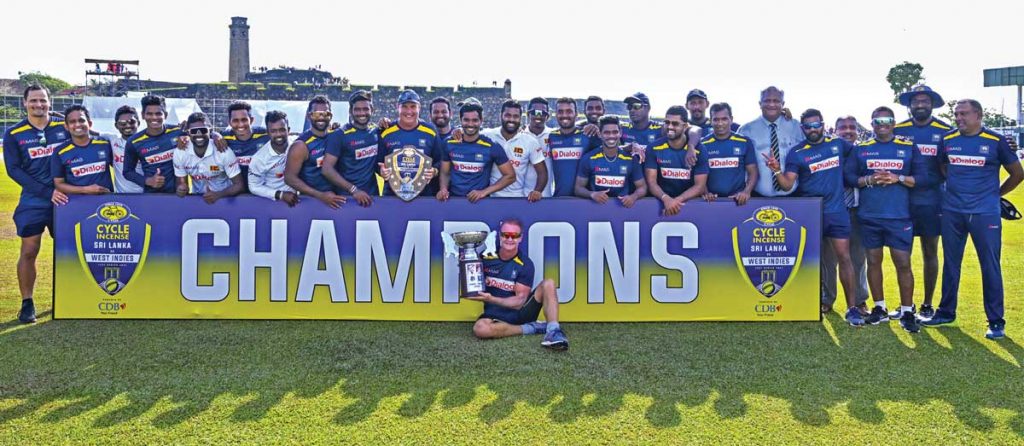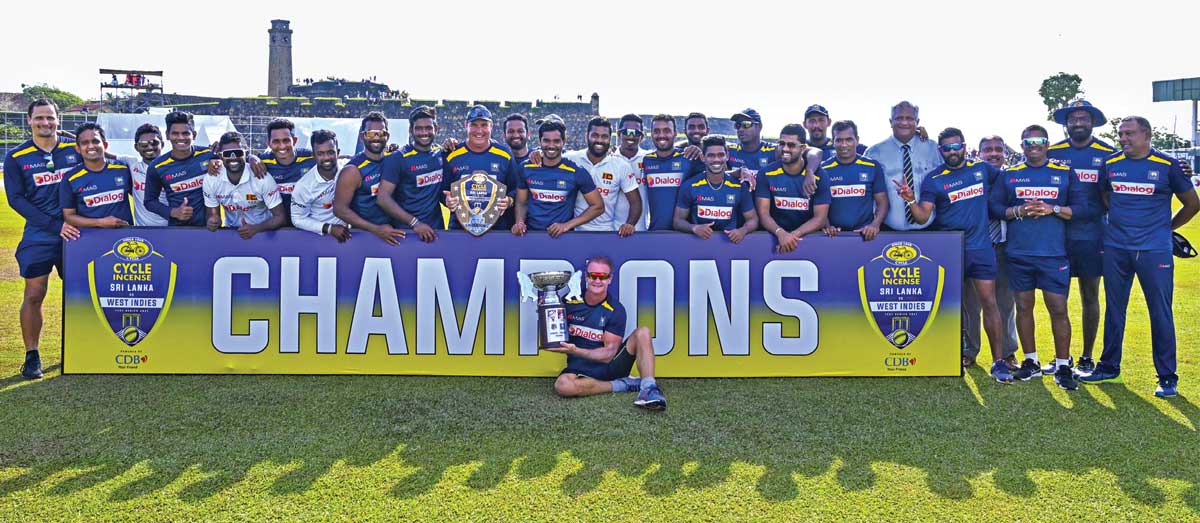A RESOUNDING VICTORY
Roshan Abeysinghe is enthused by Sri Lanka’s Test series victory against the West Indies
Sri Lanka’s cricketers will take plenty of heart from their recent resounding victory over the West Indies to win the coveted Sobers-Tissera Trophy. Dimuth Karunaratne continued his success not only as a batsman but also as the leader of the red ball team.
And the return of seniors Angelo Mathews and Dinesh Chandimal was no doubt welcome after having been left out earlier and the resulting controversies. Established opener Lahiru Thirimanne’s absence due to personal reasons, though not entirely felt, was a factor when analysing the team’s effort.
Sri Lanka will naturally be pleased with their young players too – especially spinners Ramesh Mendis and Lasith Embuldeniya, as well as Pathum Nissanka who was used in an uncustomary role in the longer format. Though not as sensational as when he made his debut, Praveen Jayawickrama was steady and did lend solid support to the other spinners.
Despite the outcome of this series however, the question is whether Sri Lanka has progressed enough in this format – and can the cricket loving fraternity continue to expect and be excited about Sri Lanka’s prospects going forward?
Yes, there is definite progress although it’s still not sufficient to make Sri Lanka the force it once was.
There are a few reasons for this assumption…
Firstly, the Test matches were played in Galle, which is the fortress of the Sri Lankan Test team where local spinners have enjoyed much success. So the point to prove will be the actual effectiveness of the spinners: How good will they be when the pitches don’t respond to them?
Having said that, the surfaces this time around with the rain also intervening weren’t as spin friendly as we’re accustomed to in Galle.
Secondly, to negate the impact on the spin advantage to some degree, the trio of Sri Lankan spinners had only played 14 Tests between them. As such, one needs to understand the importance of not having only a surface that helps but knowing to bowl on it.
On that front, credit goes to Embuldeniya and Mendis who used the conditions exceptionally well, causing mayhem in the West Indian ranks.
As for Jayawickrama, it appeared that he was confused between the T20 format and the longer version, considering the manner in which he bowled and released the ball. This can be put down to a lack of experience, which will only be countered with more exposure.

As for the pace bowling, the two pitches had very little in them and the faster bowlers weren’t given much time to bowl on them so an opinion isn’t warranted.
On the other hand, the batting was both tested and given opportunities – but there were a few areas of concern. The over reliance on Karunaratne, insufficient runs from Chandimal (though he kept going brilliantly) and Oshada Fernando’s struggle at number three will be concerns going forward.
Besides, Mathews’ injury too can be challenging for Sri Lanka, considering his importance as a batsman and the experience he carries. On a positive note, Nissanka continues to impress, and seems incapable of doing too much wrong, and the much spoken about Charith Asalanka – though having a quiet debut – will be massive pluses for Sri Lanka’s red ball prospects.
Overall, it is clear that the policy adopted by the selectors of moving on with the youngsters is gradually starting to pay dividends. This was visible in the ICC Men’s T20 World Cup too – and the continued success in red ball cricket was an affirmation of this policy.
Let’s hope that Sri Lanka will soon reach the cricketing pinnacle.


